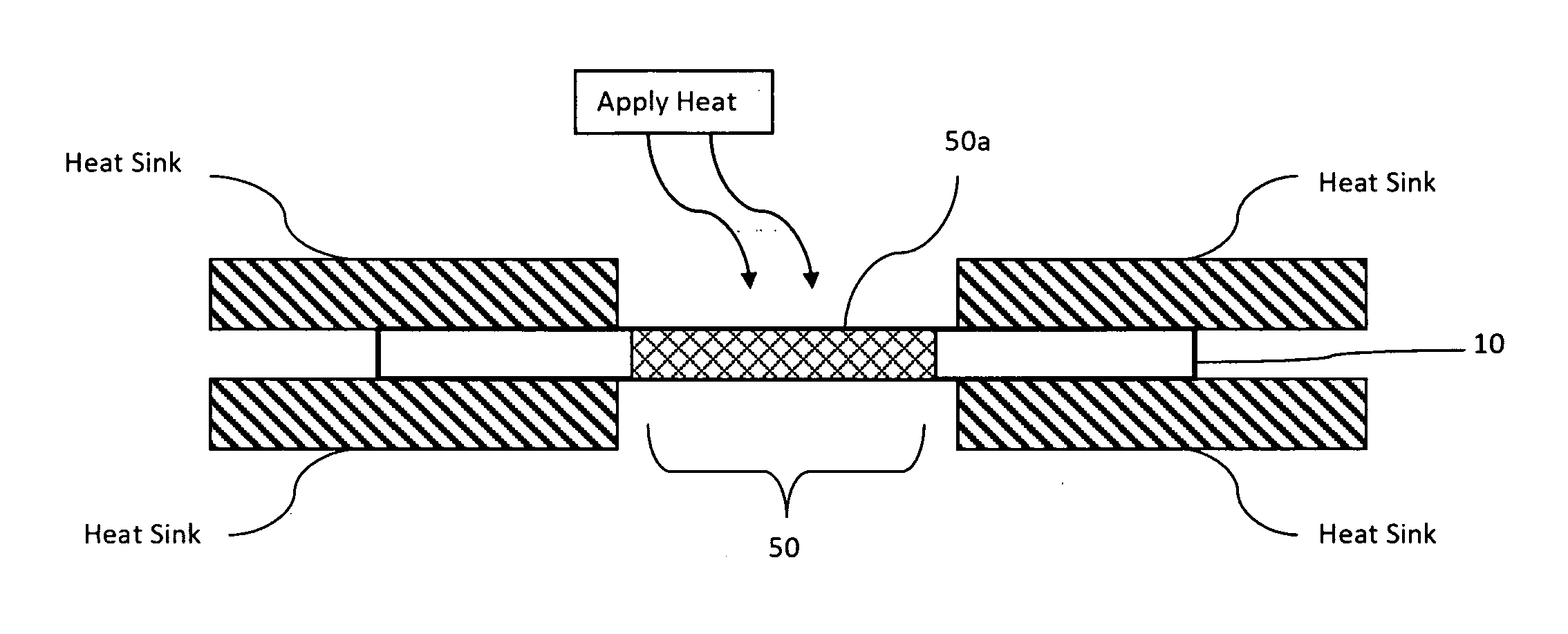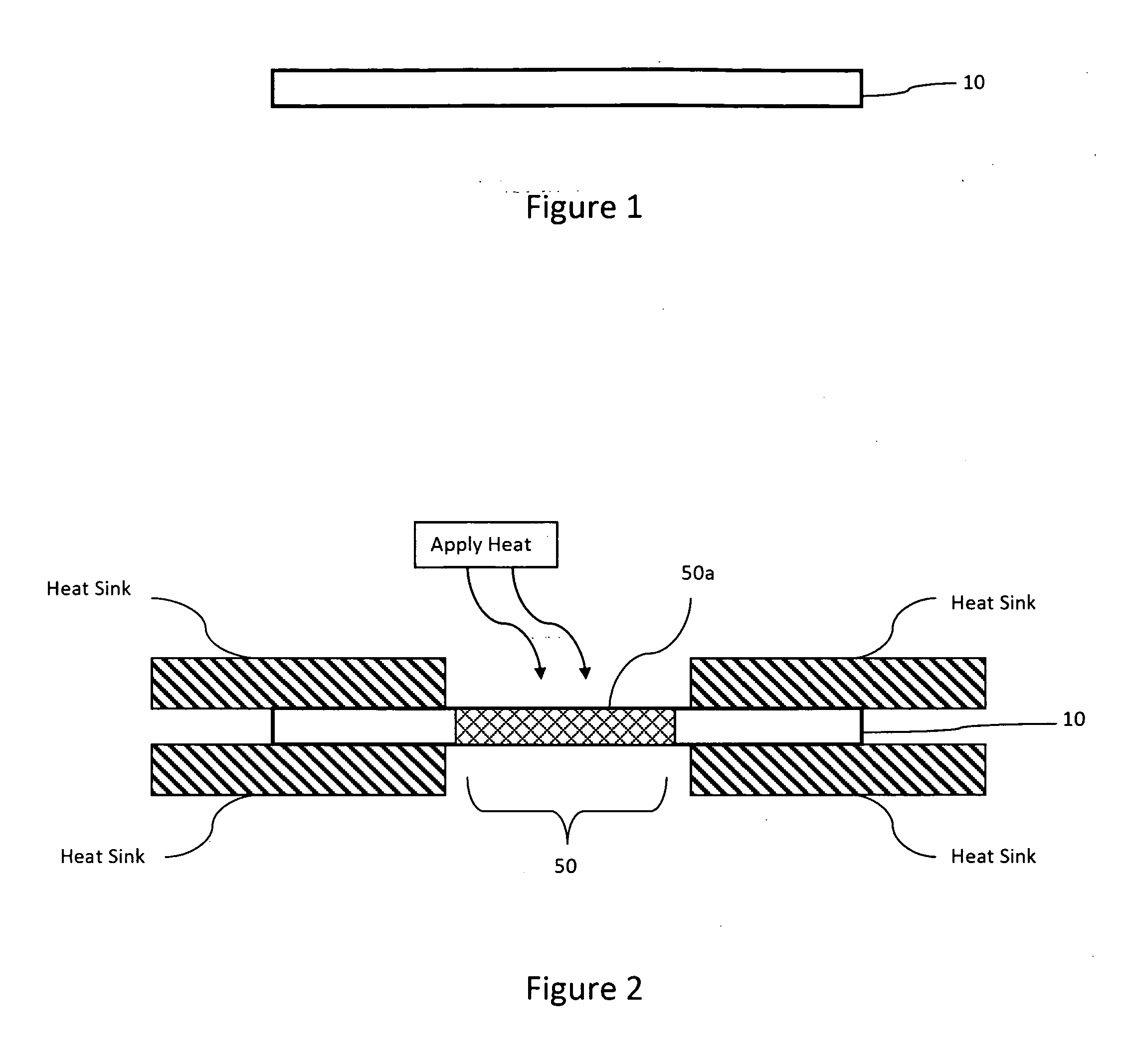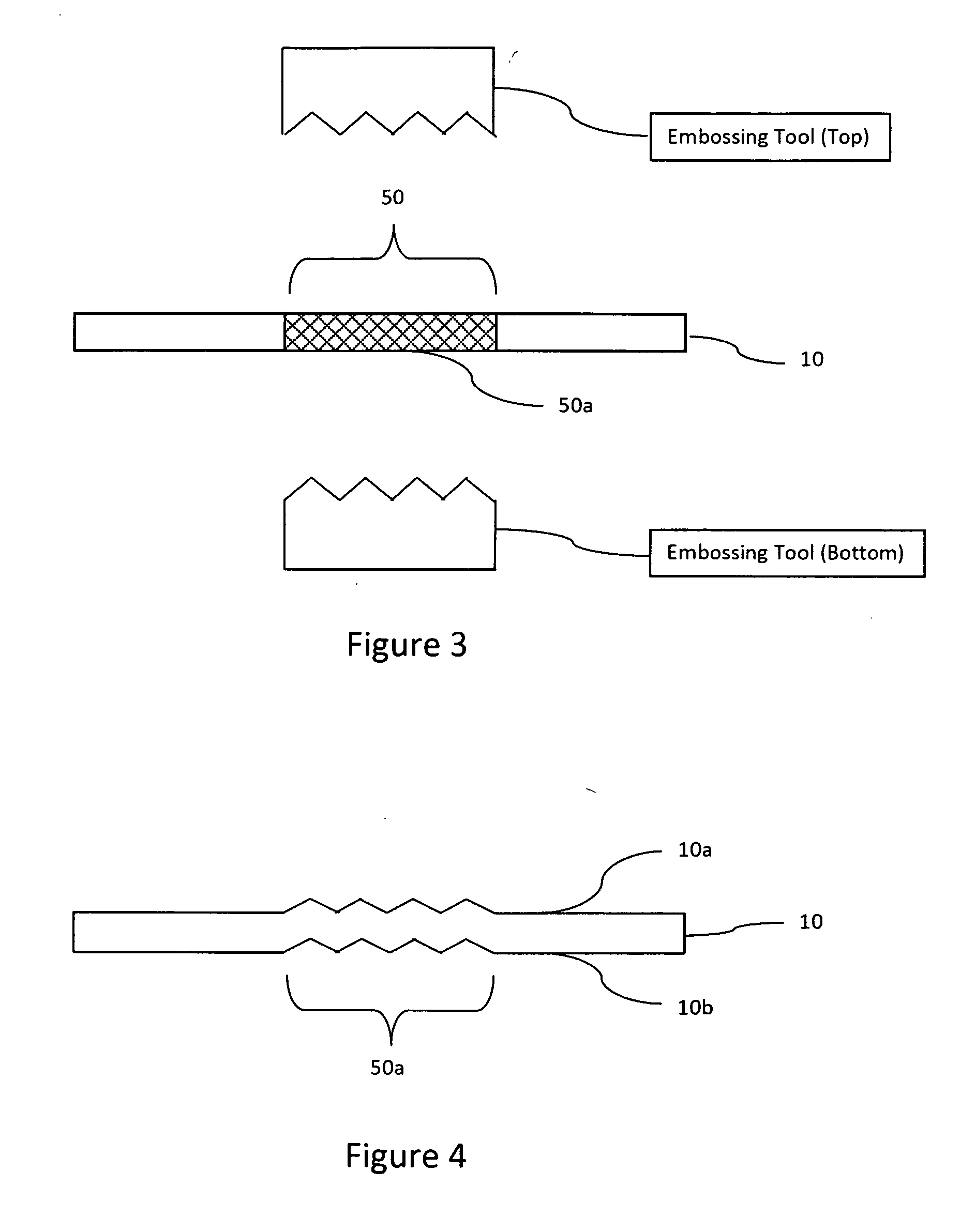Metal card
a technology of metal cards and metal parts, applied in the field of metal-containing instruments and/or cards, can solve the problems of warping, easy damage to the transaction card, so as to reduce the amount of power needed, facilitate embossing, and reduce the amount of power
- Summary
- Abstract
- Description
- Claims
- Application Information
AI Technical Summary
Benefits of technology
Problems solved by technology
Method used
Image
Examples
Embodiment Construction
[0028]FIG. 1 shows a metal layer 10 which can be used to form a “metal” card embodying the invention. The layer 10 can be selected from any metal which can be treated (heated or “fully annealed”) to a critical point where the metal becomes soft and ductile and retains that characteristic until further treated. Annealing as used herein refers to treating the metal so it can become soft and ductile and less brittle and can subsequently be molded or shaped without breaking. As discussed below, when the metal layer is in the soft ductile state it can be readily embossed.
[0029]The metal layer may be, for example, made of aluminum, copper, nickel, brass, steels including stainless steel, and / or precious metals, such as gold and silver. Basically, any metal can be used which can be softened with heat. As already noted, a requirement of metal layers, used to practice the invention, is that the metal layer be of the type which can be “treated” so it can be embossed without excessive wear and...
PUM
| Property | Measurement | Unit |
|---|---|---|
| Temperature | aaaaa | aaaaa |
| Surface area | aaaaa | aaaaa |
| Stiffness | aaaaa | aaaaa |
Abstract
Description
Claims
Application Information
 Login to View More
Login to View More - R&D
- Intellectual Property
- Life Sciences
- Materials
- Tech Scout
- Unparalleled Data Quality
- Higher Quality Content
- 60% Fewer Hallucinations
Browse by: Latest US Patents, China's latest patents, Technical Efficacy Thesaurus, Application Domain, Technology Topic, Popular Technical Reports.
© 2025 PatSnap. All rights reserved.Legal|Privacy policy|Modern Slavery Act Transparency Statement|Sitemap|About US| Contact US: help@patsnap.com



